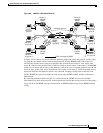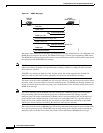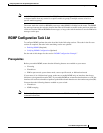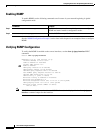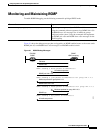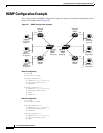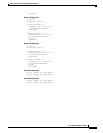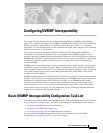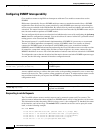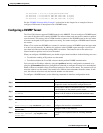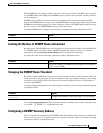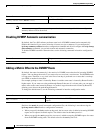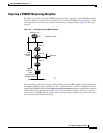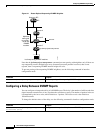
IPC-537
Cisco IOS IP Configuration Guide
Configuring DVMRP Interoperability
This chapter describes the Distance Vector Multicast Routing Protocol (DVMRP) Interoperability
feature. For a complete description of the DVMRP commands in this chapter, refer to the “IP Multicast
Routing Commands” chapter of the Cisco IOS IP Command Reference, Volume 3 of 3: Multicast
publication. To locate documentation of other commands that appear in this chapter, use the command
reference master index, or search online.
Cisco routers run Protocol Independent Multicast (PIM), and know enough about DVMRP to
successfully forward multicast packets to and receive packets from a DVMRP neighbor. It is also
possible to propagate DVMRP routes into and through a PIM cloud. The Cisco IOS software propagates
DVMRP routes and builds a separate database for these routes on each router, but PIM uses this routing
information to make the packet-forwarding decision. Cisco IOS software does not implement the
complete DVMRP.
DVMRP builds a parent-child database using a constrained multicast model to build a forwarding tree
rooted at the source of the multicast packets. Multicast packets are initially flooded down this source
tree. If redundant paths are on the source tree, packets are not forwarded along those paths. Forwarding
occurs until prune messages are received on those parent-child links, which further constrains the
broadcast of multicast packets.
DVMRP is implemented in the equipment of many vendors and is based on the public-domain mrouted
program. The Cisco IOS software supports dynamic discovery of DVMRP routers and can interoperate
with them over traditional media such as Ethernet and FDDI, or over DVMRP-specific tunnels.
To identify the hardware platform or software image information associated with a feature, use the
Feature Navigator on Cisco.com to search for information about the feature or refer to the software
release notes for a specific release. For more information, see the “Identifying Supported Platforms”
section in the “Using Cisco IOS Software” chapter.
Basic DVMRP Interoperability Configuration Task List
To configure basic interoperability with DVMRP machines, perform the tasks described in the following
sections. The tasks in the first section are required; the tasks in the remaining sections are optional.
• Configuring DVMRP Interoperability (Required)
• Configuring a DVMRP Tunnel (Optional)
• Advertising Network 0.0.0.0 to DVMRP Neighbors (Optional)
For more advanced DVMRP interoperability features, see the section “Advanced DVMRP
Interoperability Configuration Task List” later in this chapter.



